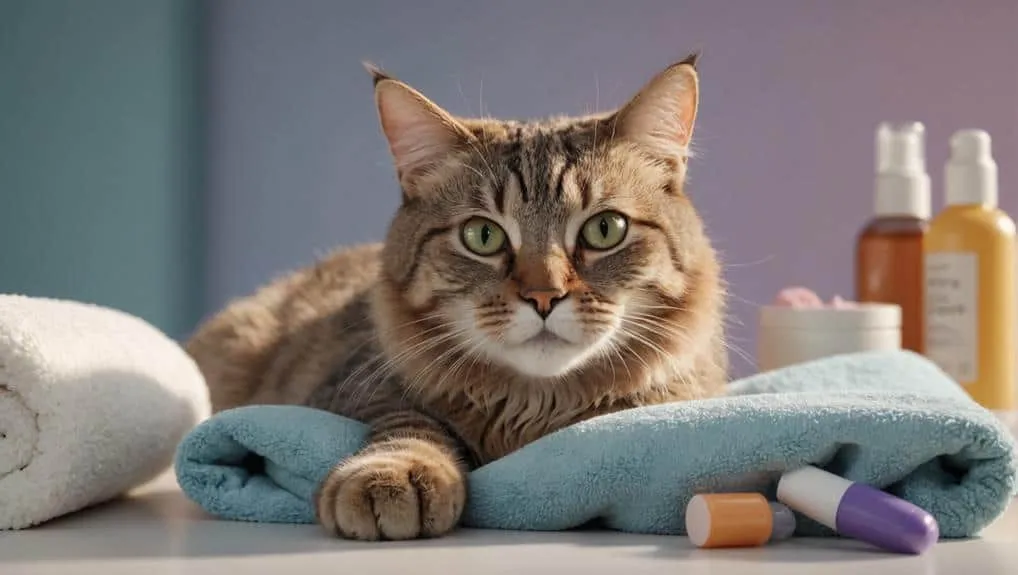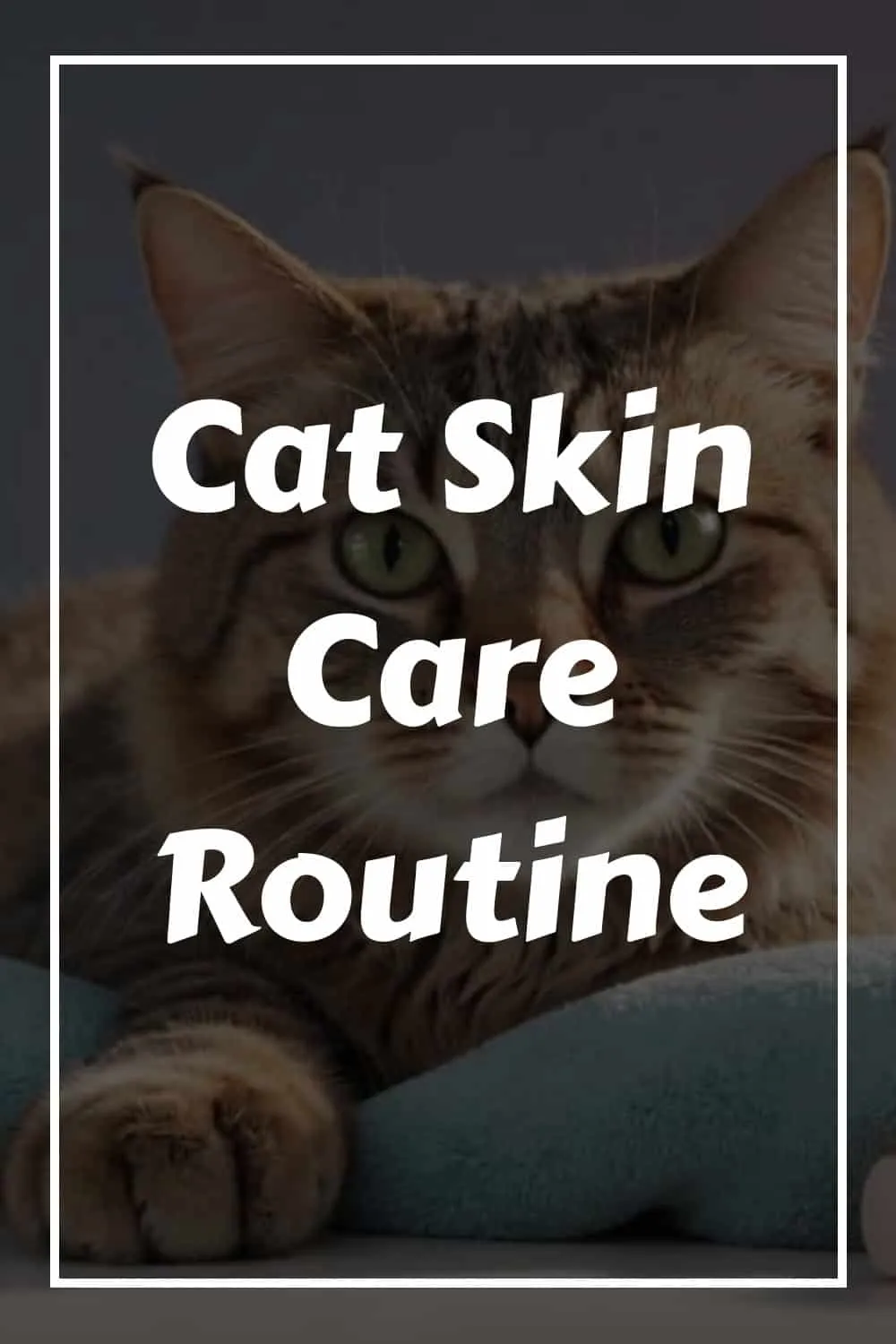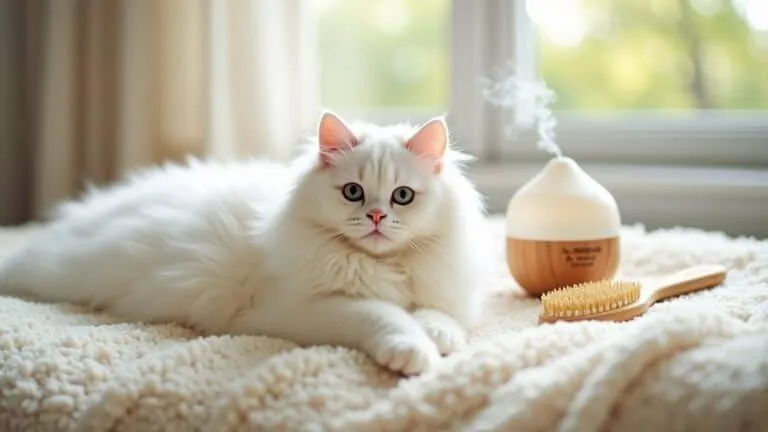The Best Fluffy Pancakes recipe you will fall in love with. Full of tips and tricks to help you make the best pancakes.

So, you want to keep your cat's skin healthy? Well, it all starts with a good routine.
First things first, your cat needs a balanced diet rich in omega-3 and omega-6 fatty acids. This will help keep them hydrated and reduce inflammation. And don't forget to make sure they always have access to clean water!
Regular grooming and brushing are also super important. Not only do they make your cat's coat look amazing, but they also remove dirt and dander, and even help stimulate blood circulation.
And let's not forget about bathing – you'll want to find a routine that works for your cat. Managing stress and preventing fleas are also crucial.
By prioritizing these things, you'll be able to catch any skin issues early on and take care of them before they become big problems.
Now, let's dive deeper into how to give your cat the best skin care possible.
Importance of Nutrition and Hydration
Feeding your cat a balanced diet is crucial for maintaining healthy skin and a vibrant coat. This diet provides the necessary building blocks for skin health and overall well-being. A well-nourished cat is better equipped to fight off skin issues.
A diet rich in omega-3 and omega-6 fatty acids supports skin hydration and reduces inflammation. These fatty acids are essential for your cat's skin health. Proper hydration is also vital, as it contributes greatly to skin barrier function and overall health.
Make sure your cat always has access to clean and fresh water. This will prevent dryness, flakiness, and a dull coat. Nutritional deficiencies can lead to skin problems, so it's essential to provide a balanced diet that meets your cat's nutritional needs.
Effective Grooming and Brushing
Incorporating a consistent grooming and brushing routine into your cat care regimen can have a significant impact on your cat's overall health and well-being. Not only will it enhance the appearance of their coat, but it'll also promote overall skin health and help detect potential issues early on.
Regular brushing is essential for removing dead hair, dirt, and dander, which can help reduce the risk of hairballs and promote a healthier coat. The frequency of brushing depends on the type of coat your cat has. Long-haired cats require daily grooming, while short-haired breeds can be brushed 1-2 times weekly.
Here's a handy guide to help you determine the right brushing frequency and brush type for your cat:
| Coat Type | Brushing Frequency | Brush Type |
|---|---|---|
| Long-haired | Daily | Slicker brush |
| Short-haired | 1-2 times weekly | Bristle brush |
| All coats | Regularly | Suitable brush for coat type |
| All coats | During grooming | Skin inspection |
Brushing has several benefits, including stimulating blood circulation in the skin and distributing natural oils throughout the coat, leading to a shinier and healthier appearance. During grooming sessions, it's crucial to inspect the skin for signs of redness, irritation, or parasites, allowing for early detection and treatment of potential issues. By using the right brush type and incorporating regular brushing into your cat care routine, you'll not only enhance coat health but also strengthen the bond between you and your cat.
Skin Care and Bathing Techniques
Developing a bathing routine that's tailored to your cat's specific skin type and needs is crucial. If you don't, you can strip their coat of its natural oils and cause irritation.
When it comes to bathing, use pH-balanced shampoos that are specifically formulated for cats. Human products are often too harsh for them. If your vet prescribes medicated shampoos for specific skin issues, be sure to use those.
For most cats, a gentle wipe down with a cool, damp rag is a better option than a full bath. This helps remove allergens and irritants without causing too much stress.
Regular brushing is also important. For long-haired breeds, daily brushing is ideal, while short-haired cats need it 1-2 times a week. Brushing removes dead hair and dirt, stimulates blood circulation, and distributes natural oils.
Moisturizing sprays and balms can help treat dry skin and maintain hydration levels.
During grooming, take the opportunity to inspect your cat's skin regularly. Look for signs of redness, parasites, or abnormal growths, and consult your vet promptly if you notice anything unusual.
Managing Stress and Anxiety
As a cat owner, you need to know that stress and anxiety can lead to skin health issues in your feline friend. When cats are stressed, they often lick or groom excessively, which can cause problems.
So, what can you do about it? First, identify what's causing your cat stress. Is it loud noises or changes in their routine? Once you know what's causing the stress, you can take steps to minimize it.
For example, you can provide your cat with safe spaces, like cozy hiding spots or perches, where they can retreat when feeling overwhelmed. Watching your cat's behavior and body language regularly can help you catch signs of stress early on.
Then, you can step in and do something about it. Daily playtime is a great way to reduce anxiety and stimulate your cat's mind. This can help prevent excessive licking or grooming, which can lead to skin problems like psychogenic alopecia.
Preventing Fleas and Parasites
As a responsible cat owner, it's crucial to prioritize flea prevention, especially if your pet spends time outdoors. Flea allergies and infestations can lead to significant skin issues, so it's essential to take proactive measures to prevent flea bites.
Flea bites can cause itchy skin, which can escalate into bacterial infections and secondary skin conditions if left untreated. And it's not just fleas you need to worry about – alternative parasites like ticks and mites can also negatively impact your cat's skin and coat health.
That's why regular inspections are essential. You can utilize veterinary-recommended preventative products like topical treatments and flea collars to maintain a flea-free environment and protect against outbreaks.
Additionally, maintaining a clean living space is vital. Frequent vacuuming and washing your cat's bedding can reduce the likelihood of flea infestations and contribute to overall skin health.
Veterinary Check-Ups and Care
Regular veterinary check-ups are super important for keeping your cat healthy, especially when it comes to their skin. You see, skin issues can really affect their quality of life, so catching them early is key.
These check-ups are the perfect chance to detect any skin conditions, sensitivities, or other health problems that might be going on.
So, what're the benefits of regular veterinary check-ups? Well, for starters, your cat will get the immunizations they need to prevent diseases that can affect their skin, like rabies and FeLV.
You'll also get personalized advice on the best dermatological products and treatments for your cat's specific skin issues or sensitivities.
And, let's not forget about their ears – the vet will make sure they're clean and infection-free, which is important for their overall skin health.
By bringing your cat in for regular check-ups, you'll be able to catch any changes in their skin condition early on.
This means you can get them the treatment they need before things get out of hand.
It's all about giving your cat the best possible care, and regular veterinary check-ups are a big part of that.
Frequently Asked Questions
How Do You Take Care of a Cat's Skin?
Taking care of your cat's skin involves a combination of several factors. First, you need to tackle any flea issues, as these pesky critters can cause serious skin problems. Skin allergies are another common issue, so you'll want to address those as well.
Moisturizing products can work wonders for your cat's skin, especially if they're prone to dryness. But don't forget about sun protection – just like us, cats can get sunburned, and that can lead to skin cancer.
Grooming techniques also play a role in skin health. Regular brushing can help distribute natural oils and reduce shedding, while baths can be beneficial if done correctly. However, over-bathing can strip the skin of its natural oils, so be careful not to overdo it.
Nutritional supplements can also make a big difference. Omega-3 fatty acids, for example, are great for skin and coat health. And don't forget to consider environmental factors like dry air and seasonal changes, which can trigger dermatological conditions. By taking all these factors into account, you can help keep your cat's skin healthy and happy.
What Is a Good Daily Routine for a Cat?
So, you want to know what makes a good daily routine for your cat? Well, it's pretty simple. You should dedicate some time to interactive play, which is basically just playing with your cat using toys or even just a laser pointer. This helps them get some exercise and have fun.
Next, you should also set aside some time for grooming. This is important because cats need to be brushed regularly to stay clean and healthy. You can use your favorite brushes to do this, and it's actually a great way to bond with your cat.
In addition to grooming, you should also make sure to trim your cat's nails regularly. This is important because long nails can be uncomfortable for your cat and can even cause health problems. You should also clean your cat's ears and eyes regularly to keep them healthy.
Dental hygiene is also crucial for your cat's overall health. You should brush your cat's teeth regularly to prevent tartar buildup and other dental problems.
Should You Bathe a Cat With Dry Skin?
So, you're wondering if you should bathe your cat with dry skin? Well, the answer is, not too often! Bathing your cat frequently can actually make their dry skin worse. Instead, it's a good idea to consult with your vet to find out the best ways to tackle the problem.
They might recommend some natural moisturizers that can help soothe your cat's skin. Gentle grooming techniques can also make a big difference. And if your cat does need a bath, make sure to use a shampoo that's gentle on their skin and won't irritate it further. By taking these steps, you can help your cat feel more comfortable in their own skin.
How to Keep Your Cat's Hygiene?
When it comes to keeping your cat clean and hygienic, there are several key areas to focus on. First and foremost, regular grooming is essential. This helps remove dirt, debris, and loose hair from their coat, reducing the risk of matting and tangling.
Next, you'll want to prioritize parasite prevention. This includes protecting your cat from fleas, ticks, and worms, which can cause discomfort, allergic reactions, and even serious health problems.
Litter box maintenance is also crucial. Scoop out solid waste daily and change the litter completely every week or two. This helps prevent the spread of bacteria and odors.
In addition to these basics, don't forget about dental hygiene. Cats are prone to dental problems, so regular brushing and veterinary check-ups can help prevent issues like tartar buildup and gum disease.
Flea treatment is another important consideration, especially during peak flea season. Work with your vet to find the best flea prevention products for your cat.
Seasonal shedding is a natural process, but it can be a real challenge. Brush your cat regularly to remove loose hair and reduce the amount of shedding.
Ear cleaning is also important, as wax buildup and dirt can cause infections. Gently clean the outer ear with a damp cloth or cotton ball, avoiding the inner ear canal.
Nail trimming is a delicate task, but it's essential to prevent overgrowth, which can cause discomfort and health problems. Work with a vet or experienced groomer to learn the best techniques.
Final Thoughts
So, you want to keep your cat's skin healthy and looking its best. The good news is that it's not that hard.
First, make sure your cat is eating a balanced diet and drinking enough water. This is the foundation of healthy skin.
Next, get your cat used to regular grooming and brushing. This helps prevent matting and tangling, which can be painful for your cat. Plus, it's a great way to bond with your feline friend.
Proper skin care and bathing techniques are also important. You don't want to strip your cat's skin of its natural oils, but you do want to keep it clean.
And let's not forget about stress management – stress can have a big impact on your cat's skin.
Finally, make sure you're keeping an eye out for parasites like fleas and ticks.
Regular check-ups with your vet are also crucial. They can catch any skin issues early on and make sure your cat gets the treatment it needs.
By following these simple steps, you can help your cat live a happy, healthy life.










